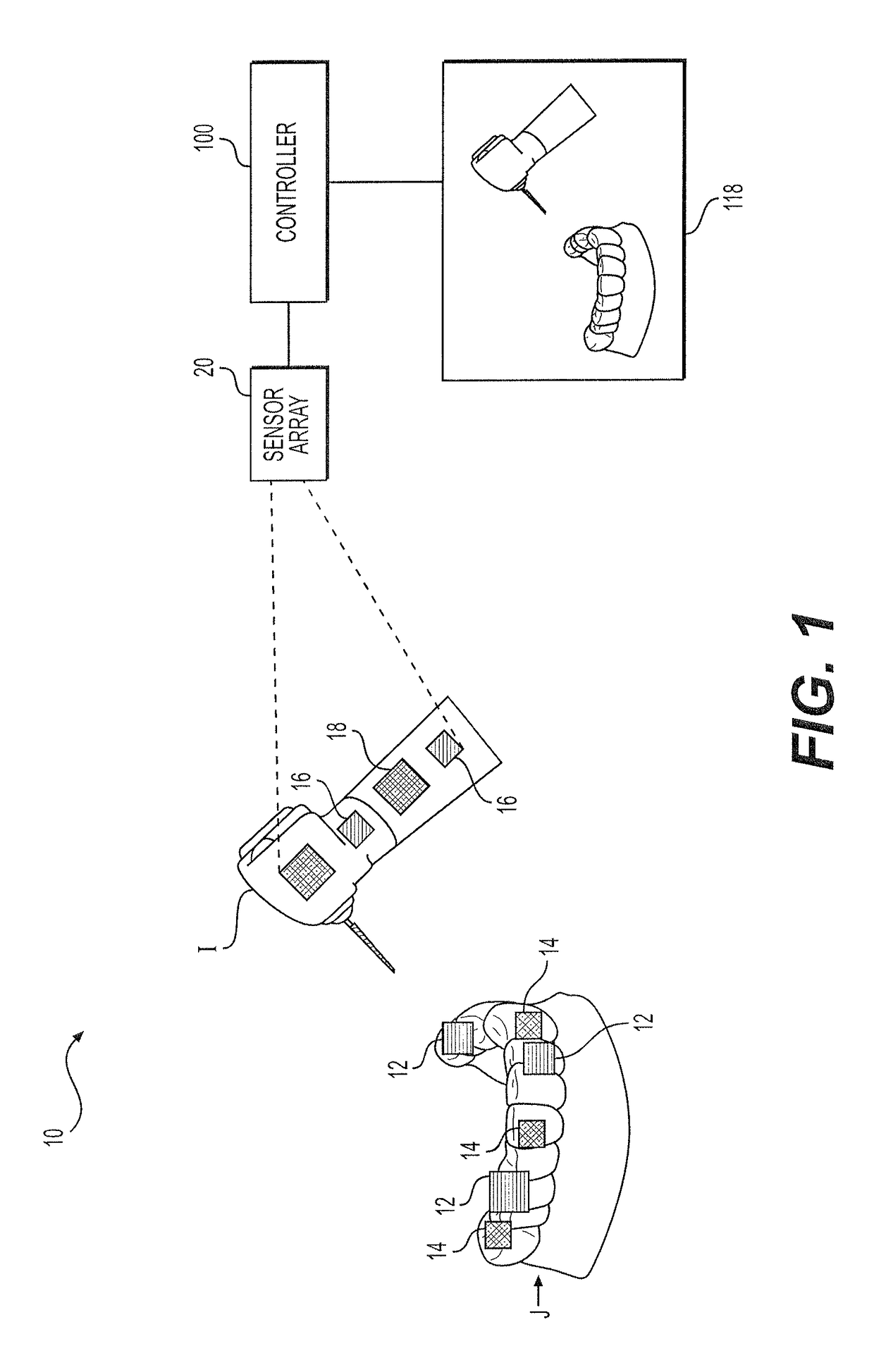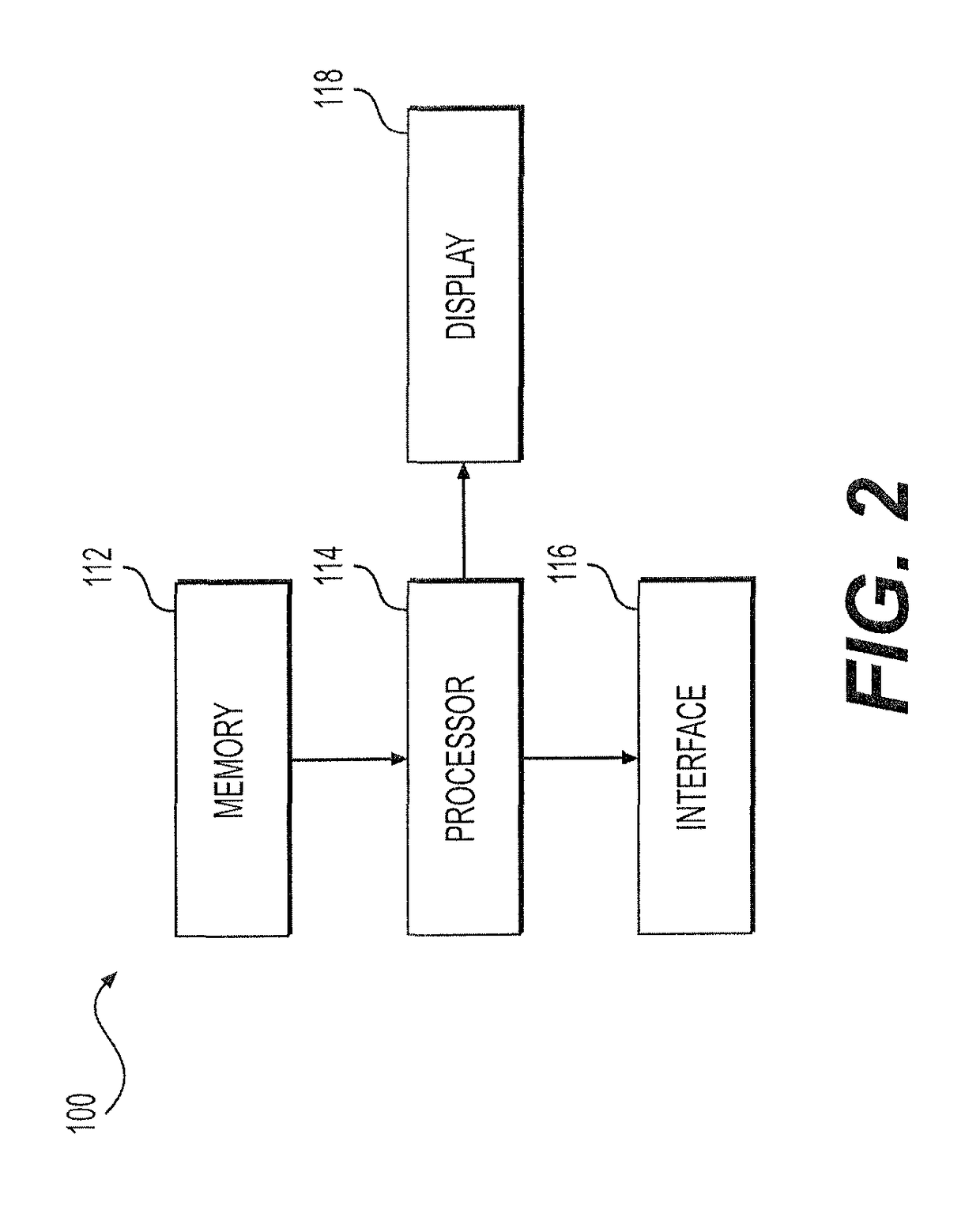Method of tracking and navigation for a dental instrument
a technology of dental instruments and tracking devices, applied in the field of machine vision-based navigation and tracking, can solve the problems of nerve damage, critical bleeding, persistent numbness, discomfort of patients or failures,
- Summary
- Abstract
- Description
- Claims
- Application Information
AI Technical Summary
Problems solved by technology
Method used
Image
Examples
Embodiment Construction
[0016]The method of tracking and navigation for a dental instrument uses feature extraction, a feature space transformation and a fusion procedure to detect the location of a target, such as a marker placed on a patient's jaw, as well as detecting the location of a dental instrument with respect to the target for guiding a dental practitioner during a procedure. As shown in the example of FIG. 1, the overall system 10 includes a plurality of patient tracking markers 12, 14 placed at various desired locations on the patient's jaw J. It should be understood that the positioning of the markers 12, 14 in FIG. 1 is shown for exemplary purposes only, and actual positioning is ultimately dependent upon the types of markers used, the patient's jaw structure, and the particular dental procedure. Similarly, a plurality of instrument tracking markers 16, 18 are positioned on a dental instrument I. It should be understood that the dental instrument I is also shown for exemplary purposes only.
[0...
PUM
 Login to View More
Login to View More Abstract
Description
Claims
Application Information
 Login to View More
Login to View More - Generate Ideas
- Intellectual Property
- Life Sciences
- Materials
- Tech Scout
- Unparalleled Data Quality
- Higher Quality Content
- 60% Fewer Hallucinations
Browse by: Latest US Patents, China's latest patents, Technical Efficacy Thesaurus, Application Domain, Technology Topic, Popular Technical Reports.
© 2025 PatSnap. All rights reserved.Legal|Privacy policy|Modern Slavery Act Transparency Statement|Sitemap|About US| Contact US: help@patsnap.com


